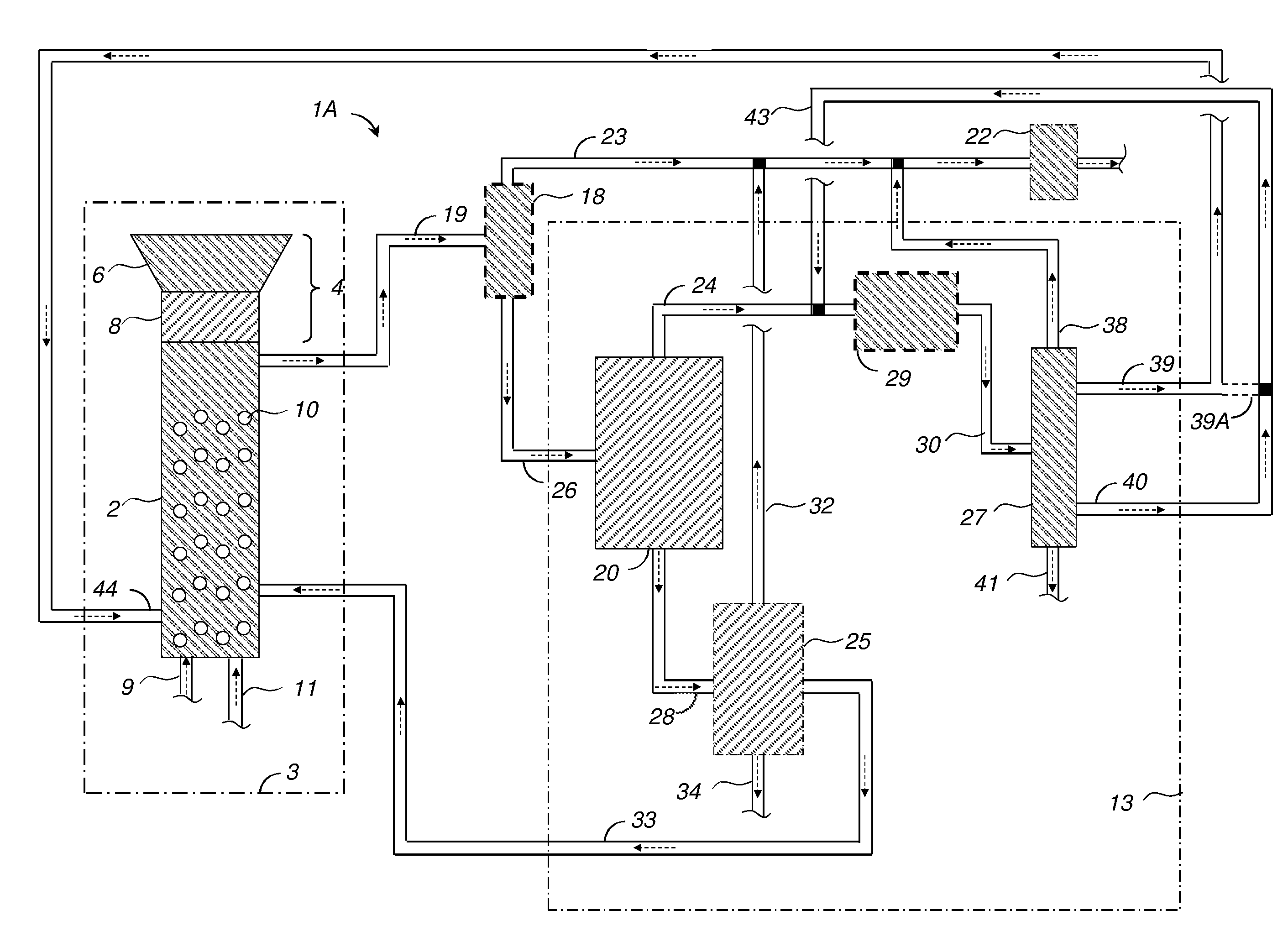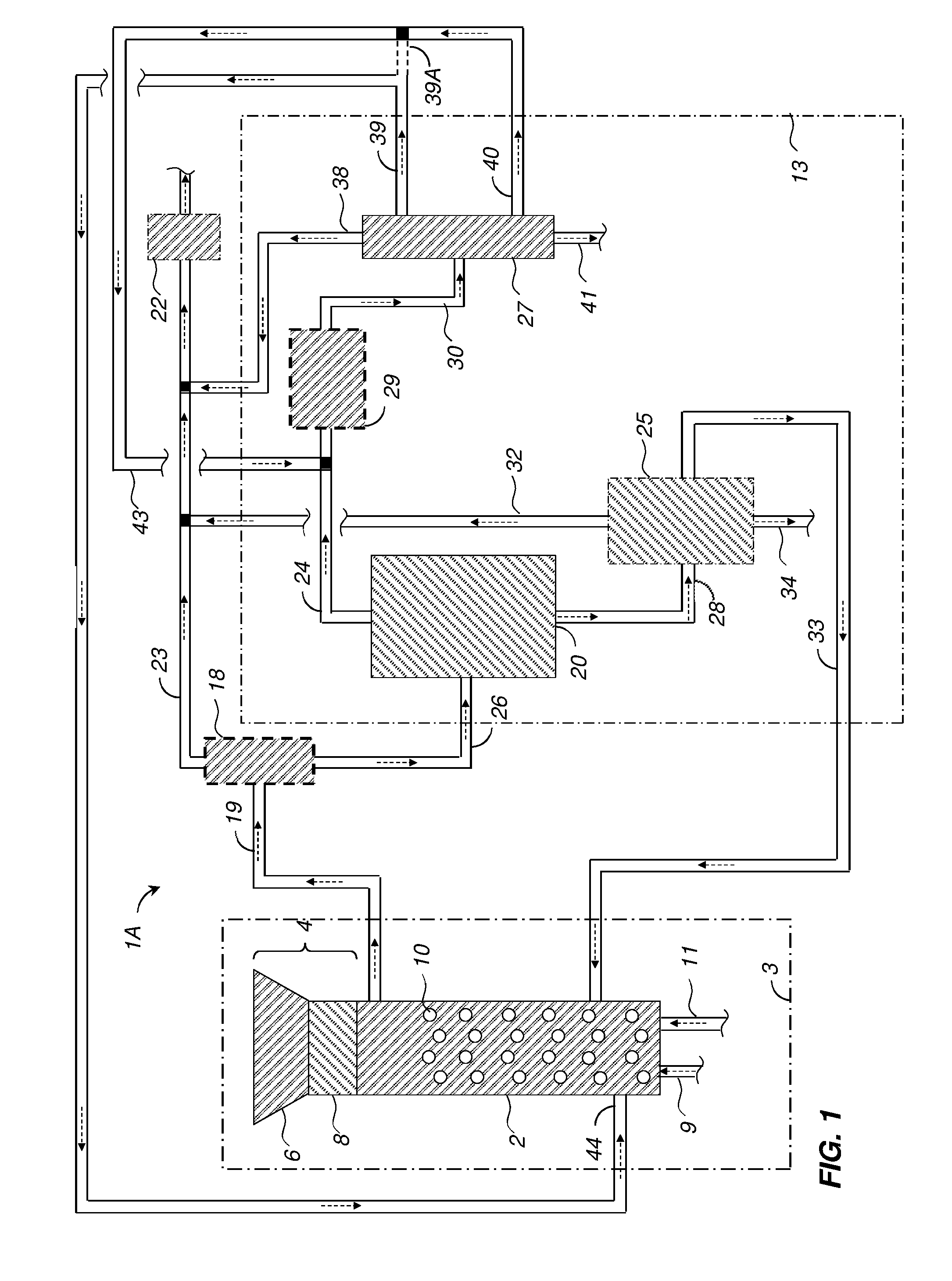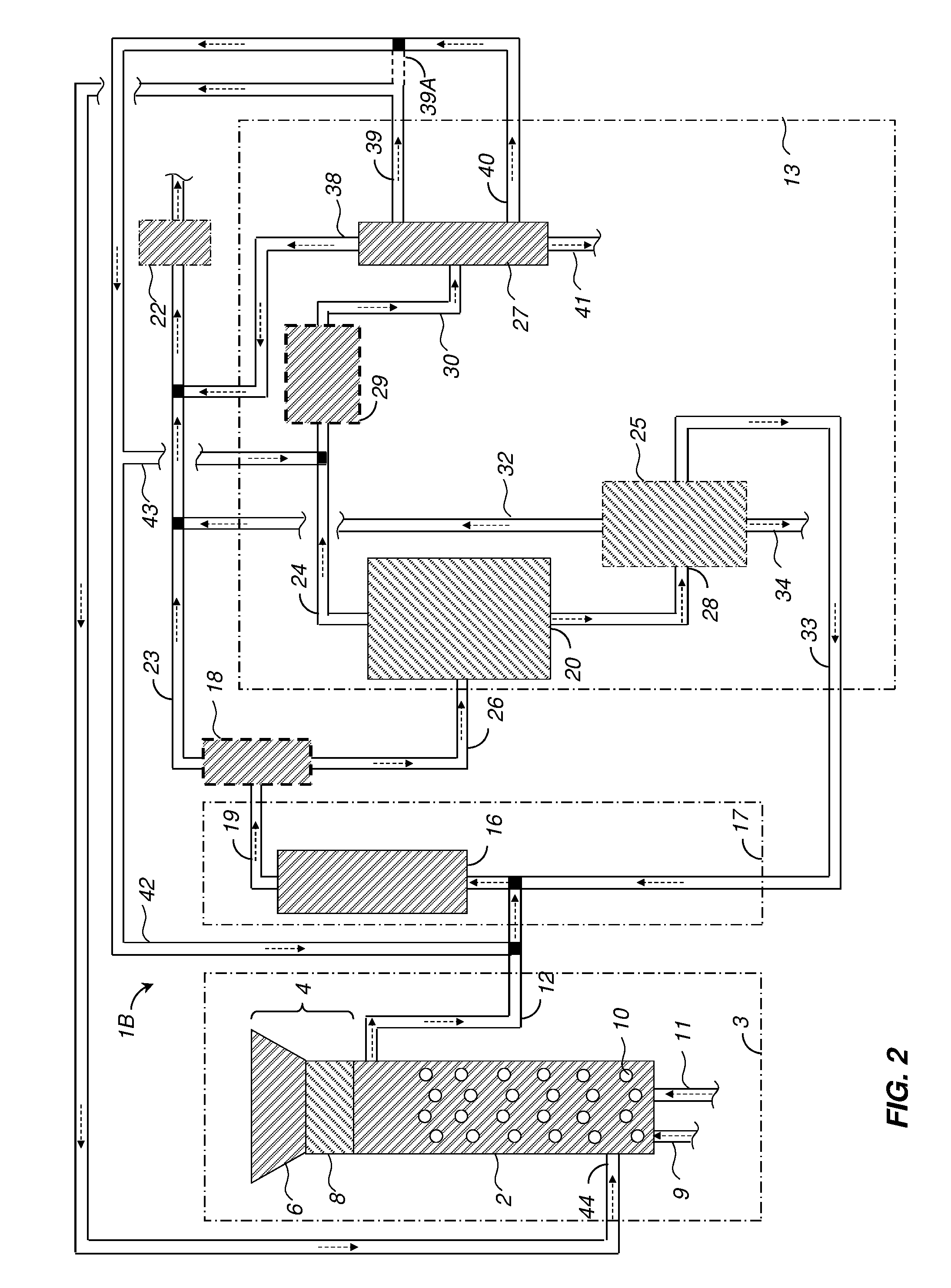Methods and systems for processing cellulosic biomass
a cellulosic biomass and cellulosic technology, applied in the field of methods and systems for processing cellulosic biomass, can solve the problems of difficult recovery of various compounds from a product of cellulosic biomass, poor product separation and steam stripping, and increased equipment costs, so as to reduce the effect of carryingover and minimizing vaporization
- Summary
- Abstract
- Description
- Claims
- Application Information
AI Technical Summary
Benefits of technology
Problems solved by technology
Method used
Image
Examples
example 1
Phase Separation of Phenolic-Solvent from MIBC-Rich Organic-Water Solvent
[0136]A solvent mixture was prepared from 57.02 grams of methylisobutylcarbinol and 3.01 grams of deionized water. A 100-milliliter Parr 4590 series reactor was charged with the solvent mixture, together with 0.19 grams of potassium carbonate buffer, and 1.8 grams of nickel-oxide promoted cobalt molybdate catalyst (DC-2534, containing 1-10% cobalt oxide and molybdenum trioxide (up to 30 wt %) on alumina, and less than 2% nickel). The catalyst was obtained from Criterion Catalyst & Technologies L.P. and sulfided by a method described in Example 5 of U.S. Application Publication No. 2010 / 0236988. The reactor was then charged with 6 grams of southern pine mini-chips (50% moisture) with size of about 3×5×5 mm in dimension, before pressuring with 52 bar of hydrogen, and heating with stirring to 190° C. for 1 hour, followed by heating to 250° C. for 4 hours.
[0137]After 6 cycles of wood addition, a mixed sample was wi...
example 2
Larger Scale Synthesis of Phenolic Rich Phase
[0140]Example 1 was repeated using a 450-ml Parr reactor with 212.2 grams of MIBC and 5.01 grams of deionized water as solvent, 0.8556 grams of potassium carbonate buffer, 8.104 grams of the sulfided cobalt molybdate catalyst. 27 grams of southern pine wood at nominal 50% moisture were added for reaction cycles again conducted under 52 bar of H2, with heating to 190 C for 1 hour, followed by 240 C for 4 hours.
[0141]The process was continued for 17 cycles of wood addition. For cycles 1-7, a mixed hot sample was removed via filtered dip tube at the end of reaction, to accommodate the mass of wood to be added in the next cycle, thus maintaining constant mass inventory in the reactor. The sintered metal dip tube plugged after seven cycles, such that product sample removal for cycle 8-18 was effected upon depressurizing and opening the reactor to remove primarily from the aqueous middle layer the amount of liquid corresponding to wood addition...
example 3
Distillation of Separated Phases
[0143]Approximately 25-gram aliquots of the final upper layer MIBC-rich and middle layer aqueous phases from Example 2, cycle 17 were separately distilled in a 100-ml distillation flask fitted with 4-stage Vigreux column. Distillation of the aqueous fraction yielded overhead cuts of light monooxygenates (alcohols less than C4), water, and upon increase in bottoms temperature, ethylene glycol and propylene glycol. No detectable phenolics were observed in the overhead cuts from the aqueous phase distillation.
[0144]The upper layer distillation yielded some light monooxygenate alcohols less than C4 early in the distillation, followed by C5 and C6 ketones and alcohols and including cyclopentanol, cyclopentanone, methyl cyclopentanone, hexanone.
[0145]Upon application of vacuum (100 torr absolute) and increasing the bottoms temperature to above 250 C but less than 310 C, an overhead distillation cut rich in phenolics was obtained, where in quantified phenoli...
PUM
| Property | Measurement | Unit |
|---|---|---|
| boiling points | aaaaa | aaaaa |
| temperatures | aaaaa | aaaaa |
| time | aaaaa | aaaaa |
Abstract
Description
Claims
Application Information
 Login to View More
Login to View More - R&D
- Intellectual Property
- Life Sciences
- Materials
- Tech Scout
- Unparalleled Data Quality
- Higher Quality Content
- 60% Fewer Hallucinations
Browse by: Latest US Patents, China's latest patents, Technical Efficacy Thesaurus, Application Domain, Technology Topic, Popular Technical Reports.
© 2025 PatSnap. All rights reserved.Legal|Privacy policy|Modern Slavery Act Transparency Statement|Sitemap|About US| Contact US: help@patsnap.com



